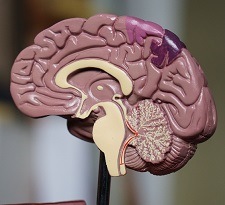 Neurosurgery experts from the University of Cambridge (Cambridge, UK) have led what is claimed to be the largest ever study examining the surgical management of traumatic brain injury, highlighting regional inequalities in both major causes and treatment of such injuries.
Neurosurgery experts from the University of Cambridge (Cambridge, UK) have led what is claimed to be the largest ever study examining the surgical management of traumatic brain injury, highlighting regional inequalities in both major causes and treatment of such injuries.
Findings from the Global Neurotrauma Outcomes study, which was funded by the National Institute for Health and Care Research (NIHR), is published in The Lancet Neurology and provides data intended to assist in decision-making and improving outcomes for patients with traumatic brain injury globally.
Angelos Kolias (Cambridge University Hospitals NHS Foundation Trust, Cambridge, UK), NIHR Global Neurotrauma Research Group associate director, said: “The results show that overall mortality is low, reflecting the life-saving nature of surgery for traumatic brain injuries. Many of these patients would have died without an operation. However, we also need to address deficits in prehospital management and long-term rehabilitation.”
David Clark (University of Cambridge, Cambridge, UK) added: “A particularly important finding is that outcome is influenced more by hospital characteristics than country of origin, which raises the possibility that changing the systems and processes of care in individual hospitals might be able to improve mortality. The paper sows the seeds for discussion and change.”
The paper focuses on types of cases, the way they are managed, and death rates, and was compiled using data submitted by 159 hospitals from across 57 countries to a central database, which the researchers then analysed. The study included a total of 1,635 records. Researchers stratified countries into four tiers—very high, high, medium, and low—according to their Human Development Index (HDI), which takes into account factors like life expectancy, education and income.
The prospective, observational cohort study determined that patients in the low HDI tier were often young and tended to suffer skull fractures due to assault, but were classified as ‘mild’ traumatic brain injury cases. In the medium and high HDI tiers, patients were also young, but most had moderate-to-severe traumatic brain injury caused by a road traffic collision and extradural haematoma—a bleed on the outside of the membrane covering of the brain (dura mater). In the very high tier, patients tended to be older and presented with a moderate or severe traumatic brain injury associated with a fall and acute subdural haematoma—a bleed on the inner surface of the dura mater.
In addition, quality of care was generally less favourable in lower HDI settings, including delays to surgery and a lack of postoperative monitoring equipment and intensive care. The very high HDI tier had the highest proportion of operations in which the most senior surgeon present in the operating theatre was a fully qualified neurosurgeon, while the medium HDI tier had the lowest proportion. The study also found significant variations between hospitals in the outcome of patients.
Alexis Joannides (Cambridge University Hospitals NHS Foundation Trust, Cambridge, UK), NIHR Global Neurotrauma Research Group informatics lead, said: “The contribution of several clinicians and researchers from several hospitals across the world has been possible due to the infrastructure and collaborations supported by the NIHR. The database and data management process used in the study have now laid the foundation for a global registry of traumatic brain injuries that we have established to support ongoing quality improvement and research in the field of traumatic brain injury.”
Peter Hutchinson (University of Cambridge, Cambridge, UK), director of the NIHR Global Neurotrauma Research Group, added: “This is the largest study in the world looking at the surgical management of head injuries, and will be of practical value to clinicians and others planning strategies for the future. The collaboration across such a vast number of hospitals and countries, together with the support of the World Federation of Neurosurgical Societies and continental neurosurgical societies, has been phenomenal.”
Concluding their report in The Lancet Neurology, the researchers write: “Patients receiving emergency neurosurgery for traumatic brain injury differed considerably in their admission characteristics and management across human development settings. Level of human development was associated with mortality. Substantial opportunities to improve care globally were identified, including reducing delays to surgery. Between-hospital variation in mortality suggests changes at an institutional level could influence outcome and comparative effectiveness research could identify best practices.”














